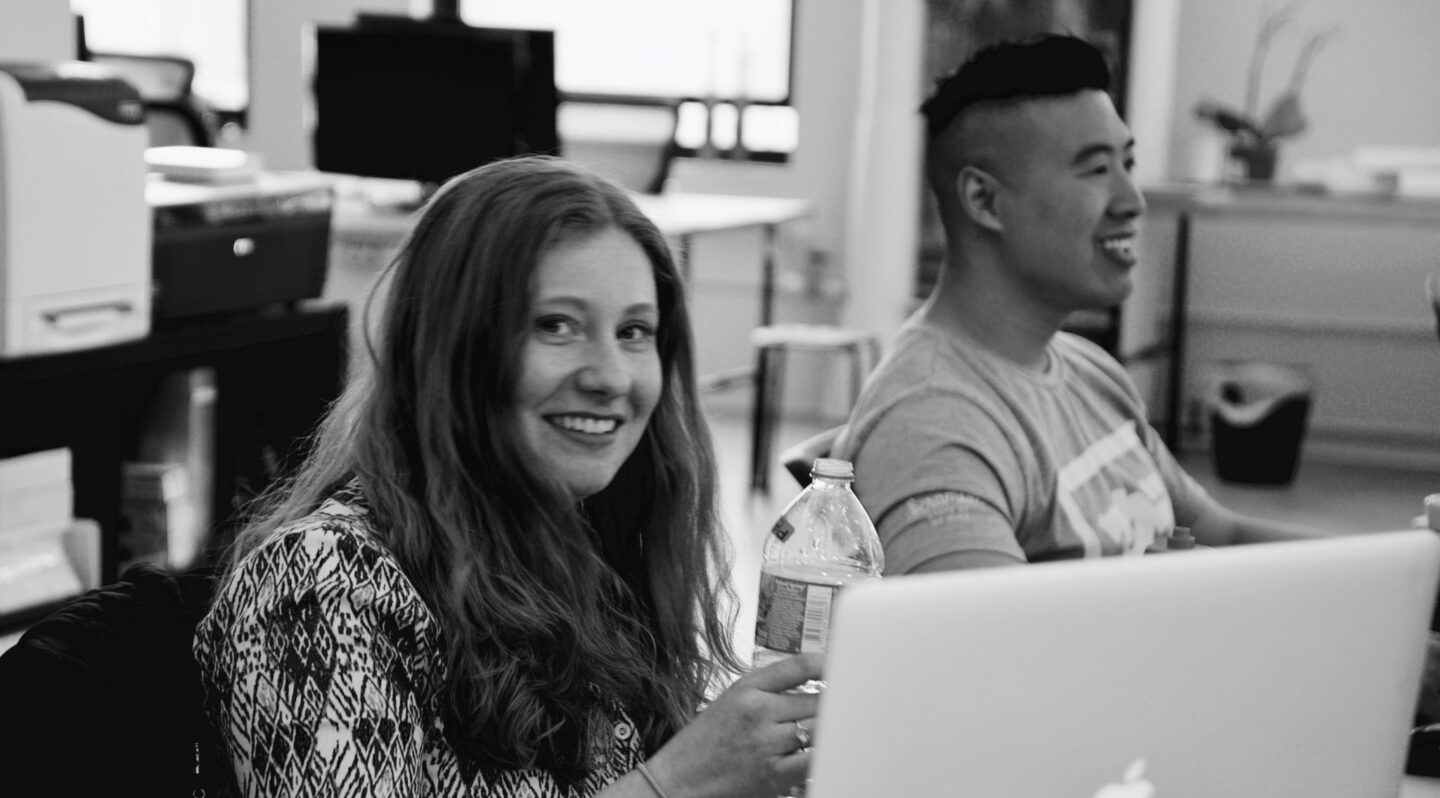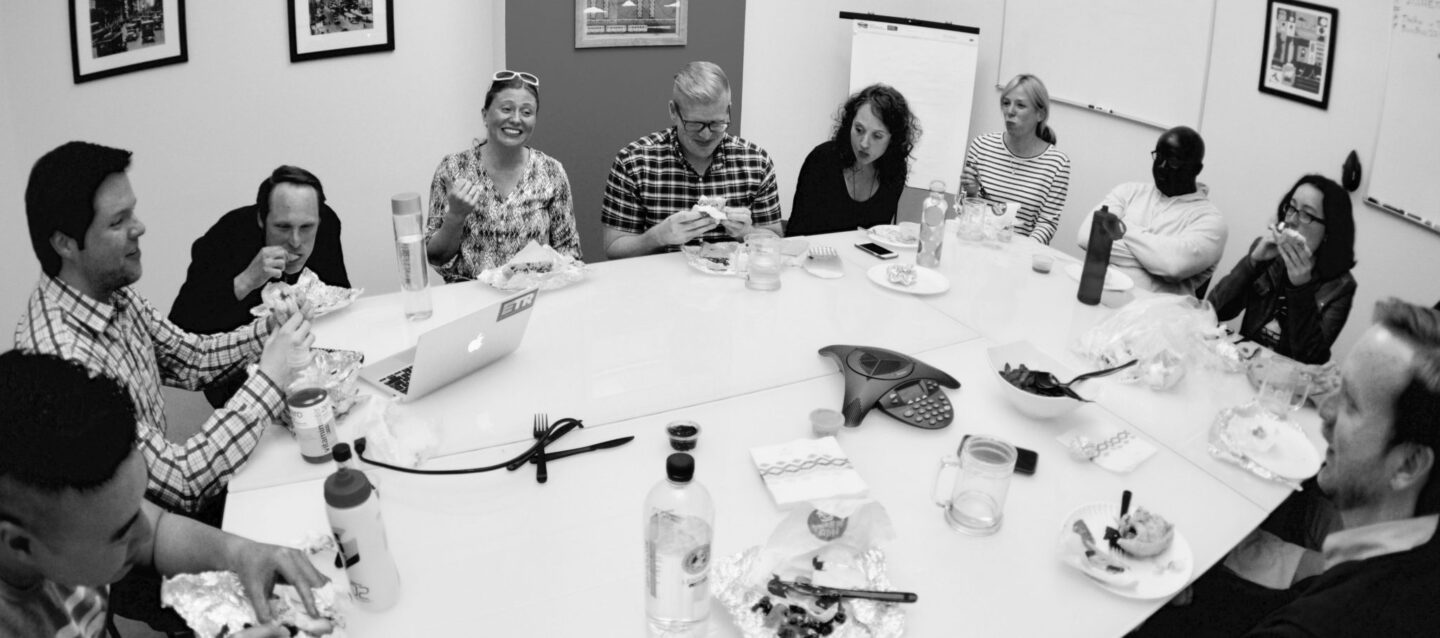ExpandTheRoom (ETR) recently published its first official code of conduct, which verbalizes our expectations for behavior in the workplace and establishes guidelines for enforcing those standards. Like the documents from which we (liberally) borrowed to construct it, we’ve made our code open source in the hope that it will spark conversations similar to the ones we’ve had in our office over the last few months.
The reason we didn’t already have a code is probably familiar to many small, tight-knit organizations that take pride in open communication and a chill atmosphere: we didn’t think it was necessary. We figured it would be redundant, and even wondered if it would erode our professional culture — put into words something we had previously assumed everyone just knew. But that’s a small-team trap, as pointed out by Andrea Barrica at Tech Inclusion:
If you delay writing a code of conduct or a harassment policy because you are just a “small team,” this leaves your startup open to risk and becomes harder to fix the longer you wait. Without collectively creating a set of cultural and behavioral norms, you are not proactively making your workplace an inclusive and safe place to work.
As we’ve realized, that’s all a code of conduct is: a set of cultural and behavioral norms that ensures your entire team is playing by the same rules. Rather than a scary official document that implies you don’t trust your employees or that you are expecting bad behavior, it’s a continuation of the values your organization already holds dear — a field guide that converts good intent into tangible, helpful guidelines.

Here’s what we at ETR want our code to say:
1. We have your back
This one comes from Erin Kissane, creator of the SRCCON Code of Conduct:
“You aren’t creating a code of conduct only — or even primarily — for the people who are likely to break it.”
Instead, we created our code to serve anyone on our team who might find themselves the target of hostile behavior. In a landscape where both conscious and unconscious bias at work is commonplace, we’ve taken the side of those who are most often marginalized — not only in the tech industry but in the professional world at large.
By outlining clear avenues to quickly and discreetly address issues should they arise, we’re hoping to show that we take this issue — and those who bring it to us — seriously. We want to empower people to come forward with concerns about both their own treatment and that of their coworkers.
2. We get that people want to learn
As an agency that believes in the power of discovery, collaboration, and shared understanding, we can’t assume everyone comes pre-loaded with an innate awareness of systematic bias. And it’s no secret that we believe most people, at their core, want to learn and improve.
In response to this, we decided to specify what exactly we mean by things like harassment, microaggressions, and hostile behavior by giving precise examples of unacceptable behavior. For example:
- Harassment. Photographing or recording a person without their knowledge or consent, including logging online activity for harassment purposes.
- Microaggressions. Assigning different labels to the same personality traits based on race, gender, sexual orientation, or other group (e.g., “ambitious” for a man vs. “bossy” for a woman).
- Hostile behavior. Repeatedly and purposefully interrupting your colleagues while they are speaking.
No one’s perfect. Codifying our expectations in easy-to-understand human language is just another way we can continue to learn and grow together.
3. Inclusion shouldn’t only start after you’ve been hired
We don’t think a code of conduct should be limited to evaluating behavior within ETR. In fact, it wouldn’t make much sense to put so much effort into creating an inclusive, respectful, and equal space within our organization without extending those values to our interactions with community members and potential hires.
Put simply, if we believe bias stacks the deck against certain people in the workplace, we should also believe it’s stacked against them ever getting here in the first place — and we should do something to even the odds.
Here are some avenues we’re exploring to source more diverse candidates:
- Committing to hire people who can learn and have grit, rather than people who already have the skills we need but may come from a similar background as our current employees.
- Using purposefully neutral language in job descriptions, avoiding a “tech bro” feel that might discourage those looking specifically for a non-toxic environment.
- Exploring a fully distributed/remote company model, which will allow us to cast a wider hiring net.
- Tweaking job descriptions to focus more on impact rather than rote requirements, considering that different candidates self-evaluate in different ways when considering whether to apply.

Make your own!
If you’re looking for resources on how to go about creating a code of your own, check out Tech Inclusion and the Ada Initiative, and visit Vox and Geek Feminism for their awesome open-source templates (or just fork ours if you think it fits you better).
We’d love to hear from you — tell us how the conversation is going at your organization and what challenges you’re facing doing so. Collaboration requires learning, and we’re all in it together.
More Insights
ETR and Infinum Sponsor the Billion Oyster Party in New York City
The Billion Oyster Project’s annual event, which took place during New York Climate Week, was the perfect occasion to celebrate our recent union with Infinum while promoting sustainability as our shared value. ExpandTheRoom has been involved with the Billion Oyster Project since its earliest days, and it’s been thrilling to see their ever-growing impact as

Change Can Spark Great Design: We Just Made the Biggest Change Ever
There’s a principle in design thinking called reframing. The idea is that by recontextualizing problems we can arrive at more innovative solutions. In other words, sometimes we’re coming up with solutions to the wrong questions. If we take a step back and consider what’s really going on in a given situation, we can often uncover


